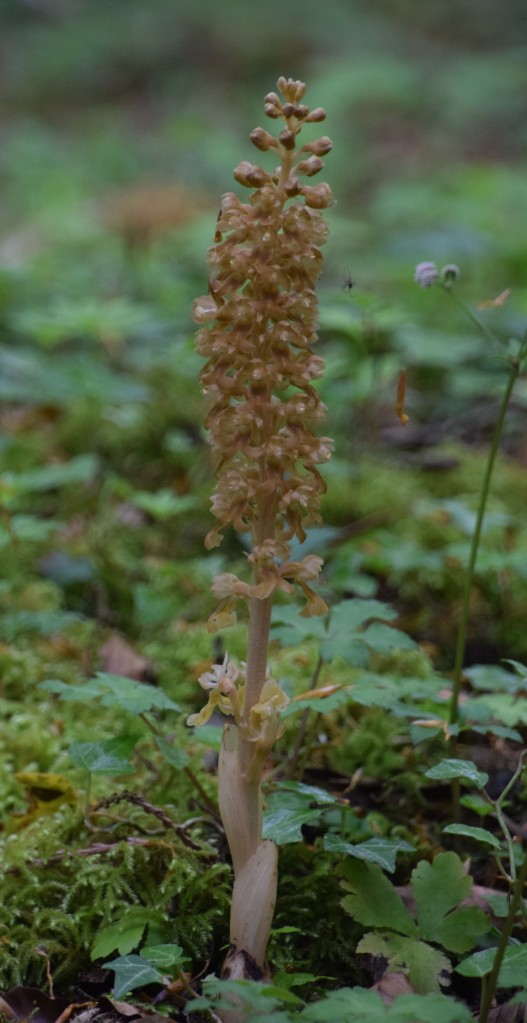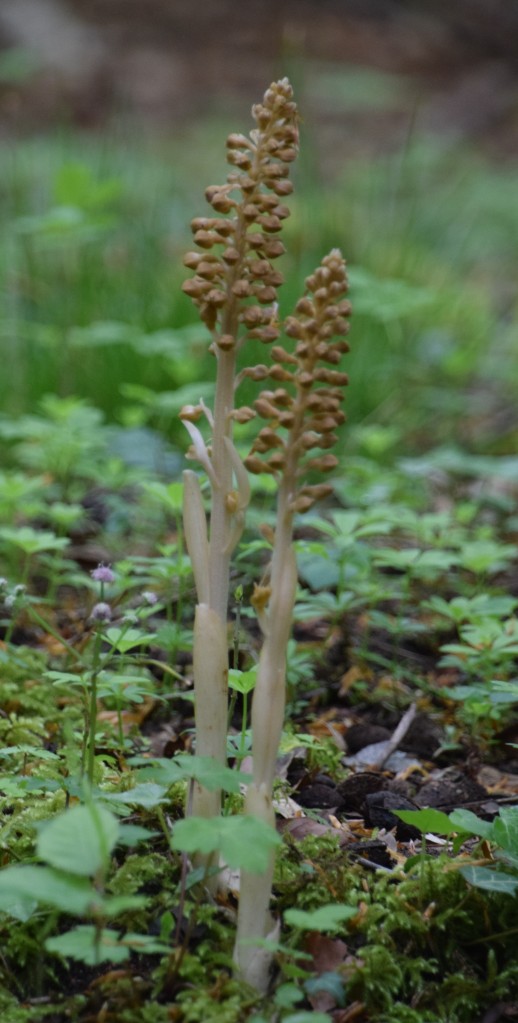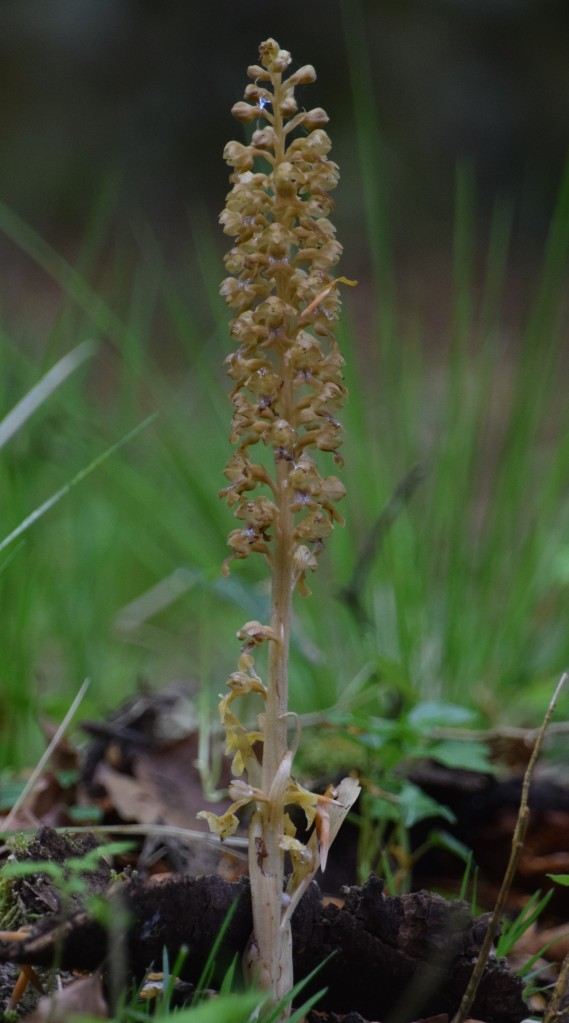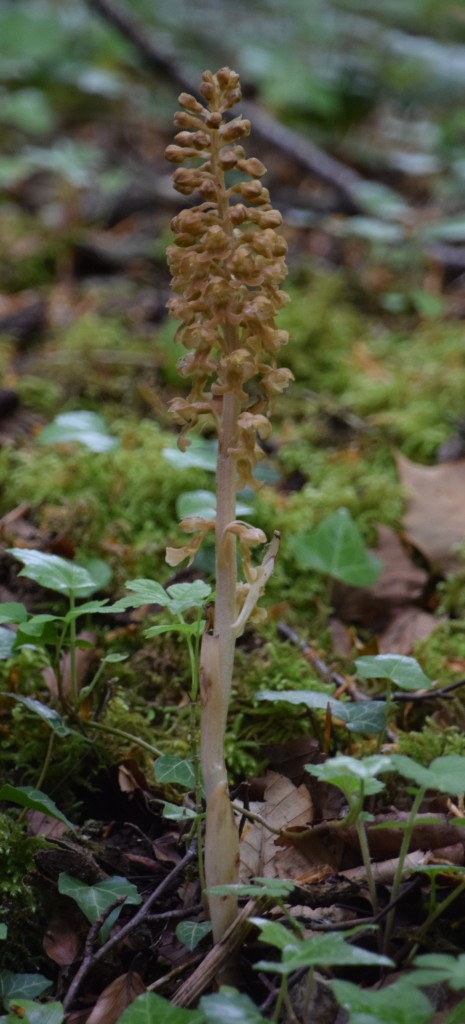2024 is by all accounts a prolific season for the enigmatic Bird’s Nest Orchid, and my relative novice’s impression is that things are generally early across the board. So when, after a rather grueling working weekend, I received a Sunday evening call from Ewan offering a private viewing of this post’s first subject in a Cotswold Beech wood containing 200 or more plants, I jumped at the opportunity. My response was also to suggest finding out the details for the title’s second item, and by the time we met he had also been tipped off as to the third new species for both of us.
In my debut Orchid season last year, I located just two beyond their best specimens of the first of those. In the past week plentiful images have appeared in the online resources I now consult of emergent BNOs with a rather more alluring quality. At today’s site near Colesbourne, the expected profusion of Bird’s Nest Orchid was more advanced. The nearest subjects (pictured below) were at eye level on a bank above one side of a minor road, But many more stretched into the middle distance on the slope above.
This declining Beech wood specialist is an unusual Orchid in various respects. The name comes from its tangled, nest-like root structure. It is entirely devoid of chlorophyll (green pigment), so is unable to photosynthesise (make nutrients from sunlight) like green plants, hence the subdued appearance. Instead it grows in deep shade and leaf litter, as a parasite on tree roots in partnership with buried host fungi. The honey-coloured and scented flowers are denser at the tops of the paler-toned stems (up to 40 cm), becoming more widely spaced lower down. Though uncommon and localised, as well as being classified as “near threatened”, BNO can thrive in suitable habitat such as here. This species has clearly benefited from the notably wet spring just past.
From there we moved on to a well-known site just south of Stroud to search out its famed Fly-Bee hybrids. The limestone grassland on a flat-topped spur of the Cotswold escarpment is one of just three national sites for this extreme rarity; the others being near Arundel, Sussex and at Maperton Ridge in Somerset. This hybrid first emerged from a genetic experiment in 1962 but has since occurred in the wild, though whether that is naturally or by design I cannot ascertain. The blooms (pictured below), up to 10 on a stem, combine roughly equal characteristics from each of the parent plants.



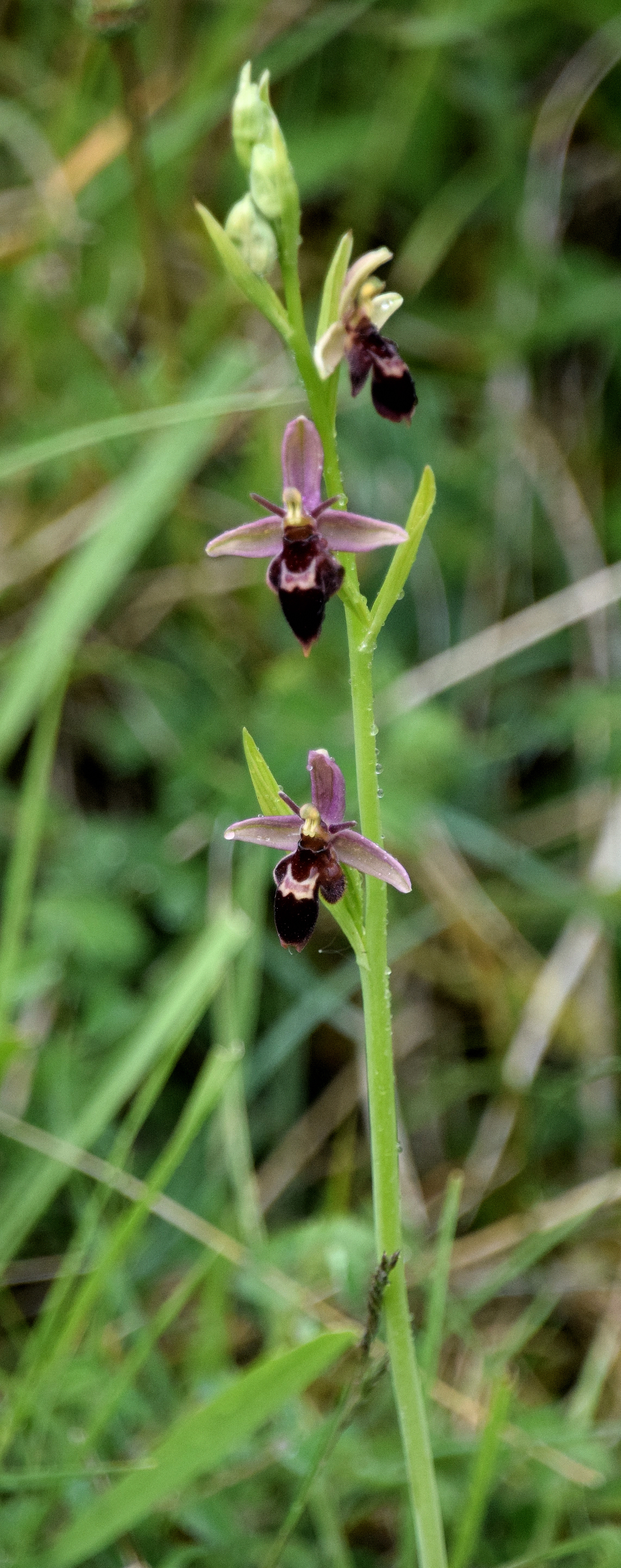
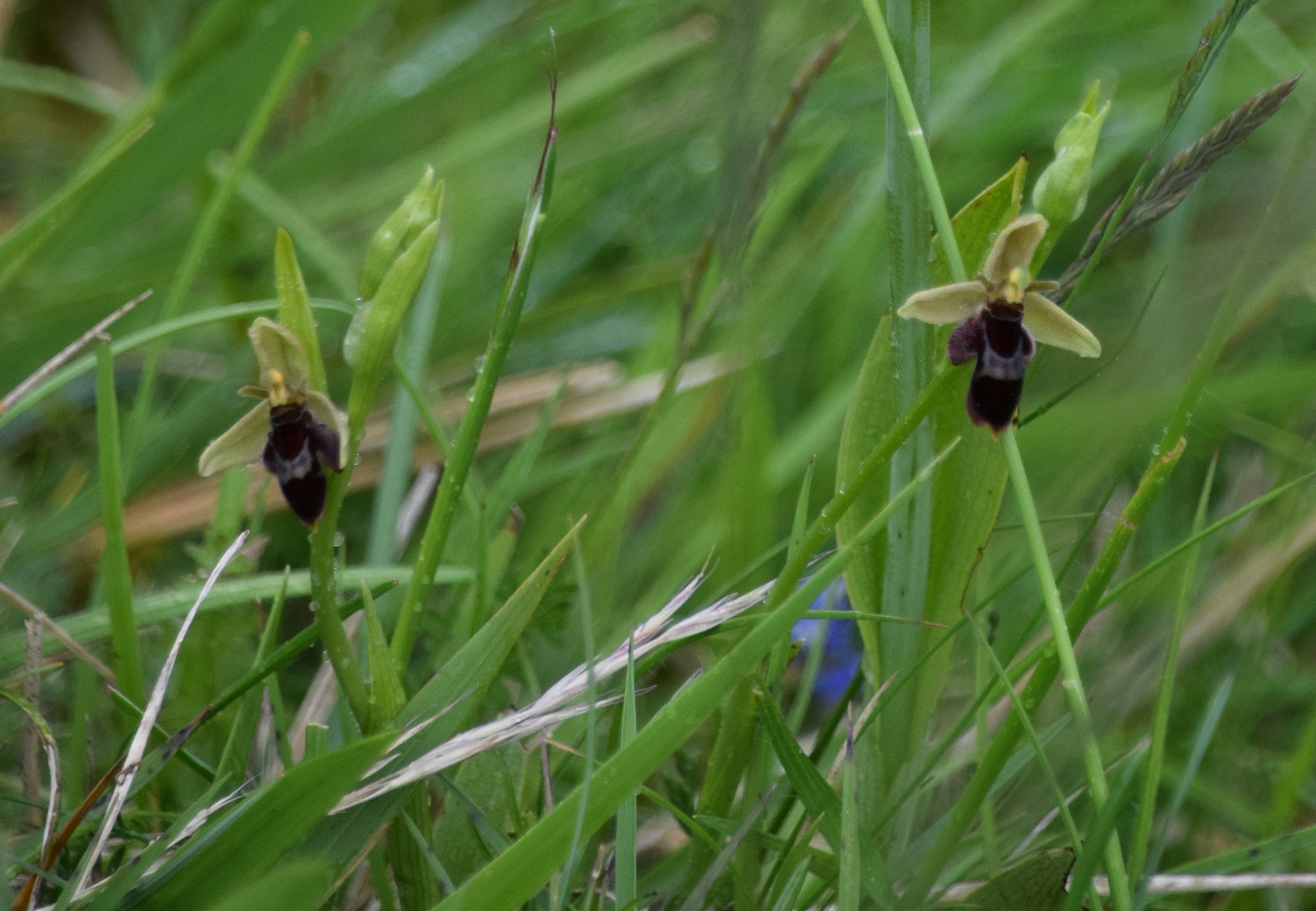

Fly-Bee hybrid Orchids (Ophrys x Pietzschill) and Fly Orchid (bottom right) for comparison
I admit to feeling a little underwhelmed by pure Fly Orchids since the flowers are so tiny, but there was something of a thrill in encountering these beautiful and all too vulnerable mutations. Here just two or possibly three plants announced themselves in a completely unprotected state, though the remoteness of the location was possibly a sufficient safeguard at least from human interference. The spot on a steep scarp face seemed ungrazed by Sheep, but I cannot vouch for Rabbits! Apparently a later season, reverse-pole Bee-Fly hybrid occurs nearby, but I doubt whether I will attempt to separate the two.
Our final stop of this Cotswold tour was another Beech wood at nearby Rodborough that is one of only two Gloster sites for Sword-leaved Helleborine. Also known as Narrow- or Long-leaved, these endangered plants now survive at around just 20 sites nationally, that scarcity being due mainly to changes in woodland management. Growing up to 50 cm tall, they are separated from White Helleborine by the long, narrow leaves (each up to 45 cm) that alternate up the stem towards a spire of white, bell-shaped flowers.

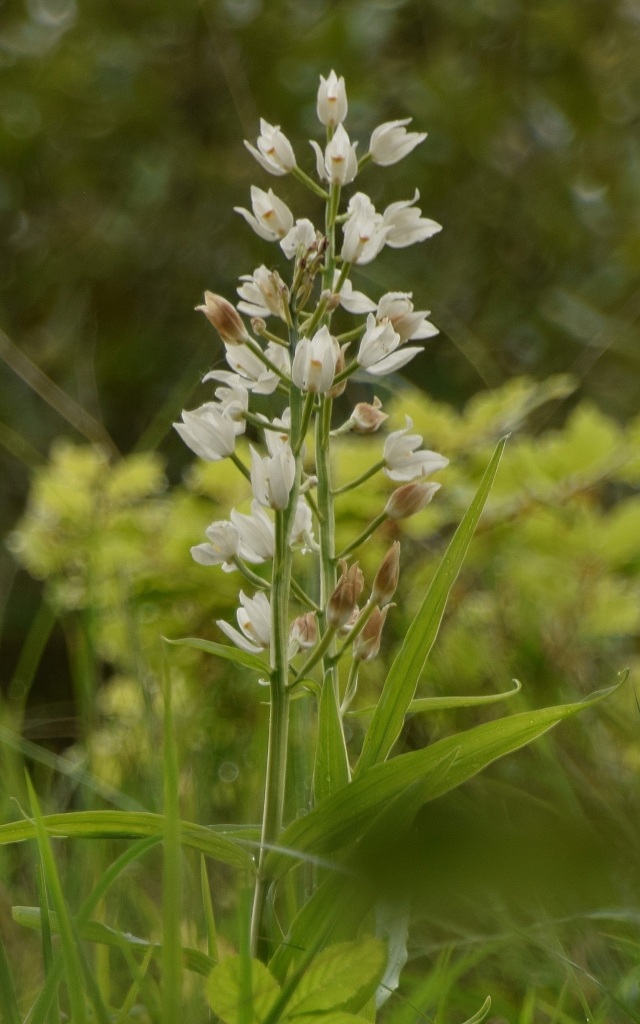
Here there were seven plants beneath a lone Holm Oak. I didn’t dare to attempt the steep slope, but could take adequate pictures (above) of the largest specimen from the minor road side. This was a very successful day, with all three targets converted. Due to the sensitivity of the sites covered herein, and through agreement with my companion’s source, I cannot include precise location detail for any of these Orchids.

